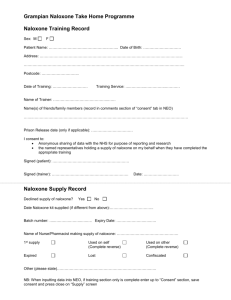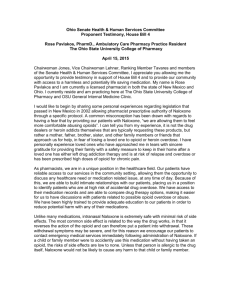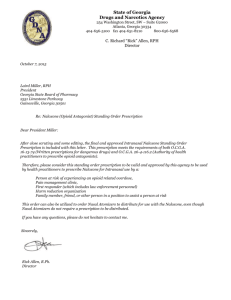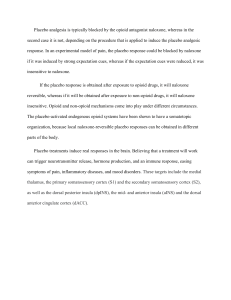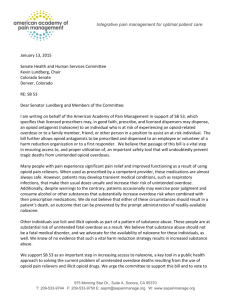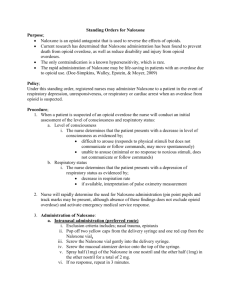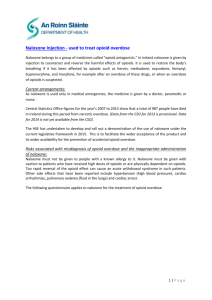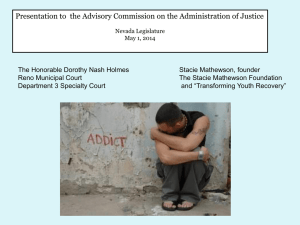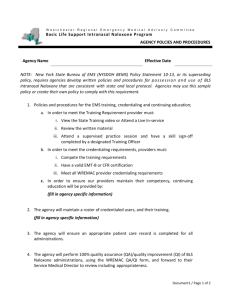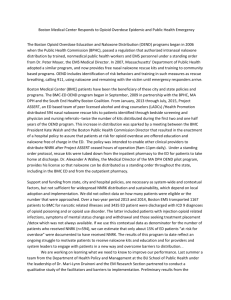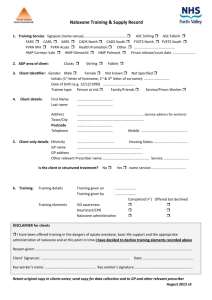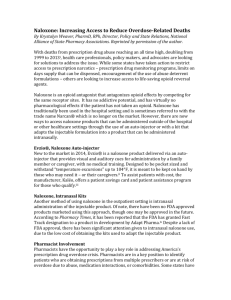Procedure
advertisement
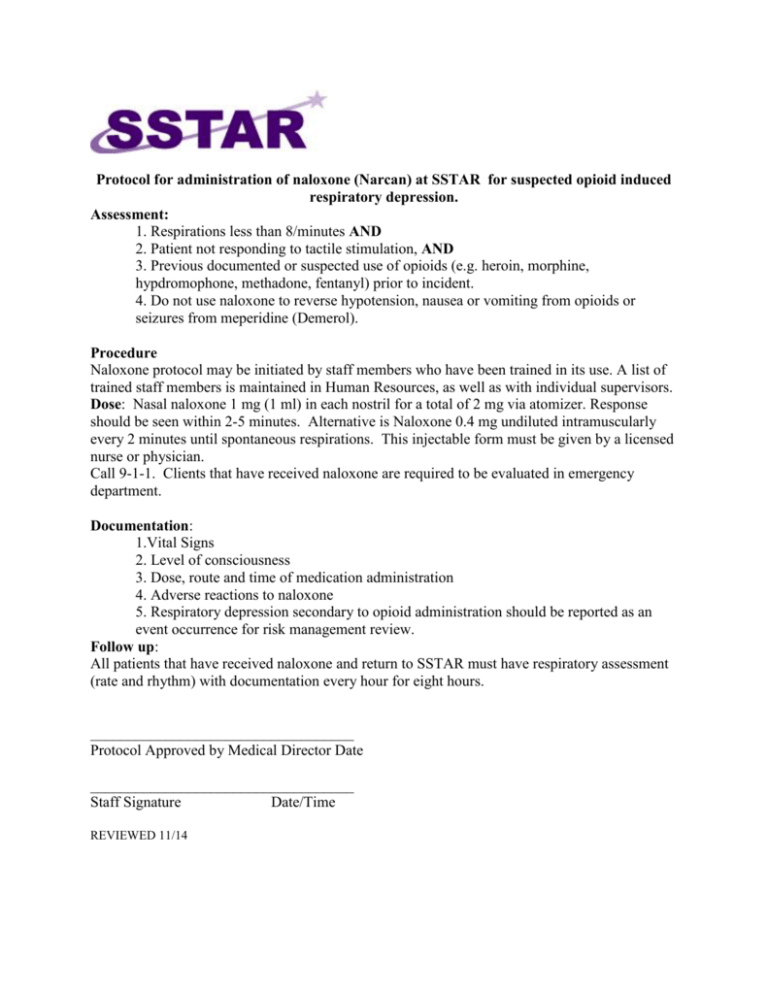
Protocol for administration of naloxone (Narcan) at SSTAR for suspected opioid induced respiratory depression. Assessment: 1. Respirations less than 8/minutes AND 2. Patient not responding to tactile stimulation, AND 3. Previous documented or suspected use of opioids (e.g. heroin, morphine, hypdromophone, methadone, fentanyl) prior to incident. 4. Do not use naloxone to reverse hypotension, nausea or vomiting from opioids or seizures from meperidine (Demerol). Procedure Naloxone protocol may be initiated by staff members who have been trained in its use. A list of trained staff members is maintained in Human Resources, as well as with individual supervisors. Dose: Nasal naloxone 1 mg (1 ml) in each nostril for a total of 2 mg via atomizer. Response should be seen within 2-5 minutes. Alternative is Naloxone 0.4 mg undiluted intramuscularly every 2 minutes until spontaneous respirations. This injectable form must be given by a licensed nurse or physician. Call 9-1-1. Clients that have received naloxone are required to be evaluated in emergency department. Documentation: 1.Vital Signs 2. Level of consciousness 3. Dose, route and time of medication administration 4. Adverse reactions to naloxone 5. Respiratory depression secondary to opioid administration should be reported as an event occurrence for risk management review. Follow up: All patients that have received naloxone and return to SSTAR must have respiratory assessment (rate and rhythm) with documentation every hour for eight hours. ___________________________________ Protocol Approved by Medical Director Date ___________________________________ Staff Signature Date/Time REVIEWED 11/14 Medication Information Classification: Naloxone (Brand name-Narcan) is a pure opioid antagonist that competes and displaces narcotics at opioid receptor sites. Use: Complete or partial reversal of opioid depression, including respiratory depression, induced by natural and synthetic opioids, including heroin, oxycodone, hydrocodone, propoxphene, methadone and certain mixed agonist- antagonist analgesics: nalbuphine, pentazocine and butorphanol. Duration of action: 20-60 minutes Contraindications: Hypersensitivity to naloxone or any component of the formulation. Warning/Precautions: 1. Due to an association between naloxone and acute pulmonary edema, use with caution in patients with cardiovascular disease or in patients receiving medications with potential adverse cardiovascular effects (e.g., hypotension, pulmonary edema or arrhythmias). 2. May precipitate withdrawal symptoms in patients addicted to opiates, including pain, hypertension, sweating, agitation and irritability. 3. Recurrence of respiratory depression is possible if the opioid involved is long-acting; patients require observation until there is no reasonable risk of recurrent respiratory depression. 4. Use cautiously in patients with known renal insufficiency as it may have a prolonged effect. Pregnancy Risk Factor- C Adverse reactions/withdrawal symptoms in opioid dependent patients should be documented and may include: Cardiovascular: Hyper/hypotension, tachycardia, ventricular arrhythmia, and cardiac arrest Central Nervous System: Irritability, anxiety, narcotic withdrawal, restlessness, seizure Gastrointestinal: Nausea, vomiting diarrhea Neuromuscular/skeletal: Tremulousness Respiratory: Dyspnea, pulmonary edema, runny nose, sneezing Miscellaneous: Diaphoresis
